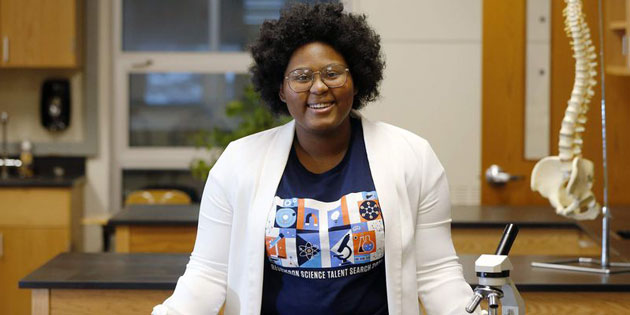At only 17 years old, Dasia Taylor has created colour-changing sutures that can detect whether a surgical wound is infected by simply using the dye from a common household vegetable: beetroots! The teen, from Iowa City, entered her project into the prestigious Regeneron Science Talent Search, where she was named one of 40 finalists. The other finalists voted for her to receive the Seaborg Award, guaranteeing her a prize of $25,000 and making her spokesperson for the finalists.
Human skin is naturally slightly acidic, with a pH of around 5-6, but when infected, this pH increases to around 9, making it slightly alkaline. Taylor noticed that beetroot juice changes colour from a bright red at pH 5 to a dark purple at pH 9, making it an ideal natural indicator of changes in skin pH caused by infection. Using cotton-polyester thread stained with beetroot dye, Taylor showed that after five under infection-like pH conditions, the thread changed from a bright red to dark purple colour. When left for three days the purple faded to a light grey.

Whilst “smart” sutures that utilise smartphone technology to identify an infected surgical wound already exist, such technology is only accessible in countries with large smartphone access. This makes it difficult to implement in developing countries where there are higher rates of surgical wound infection according to the World Health Organisation. Taylor aimed to tackle this project from an equity point-of-view, to develop a technology that could be easily accessible by all.
Taylor is now undergoing work with microbiologists at the University of Iowa to further develop the sutures to avoid the harbouring of bacteria within the cotton thread, and turn her high school project into a procedure seen in the clinic. If implemented, this technology could catch surgical infections much sooner and prove lifesaving for many people across the globe.
By Phoebe Turner
Featured image from Society for Science

